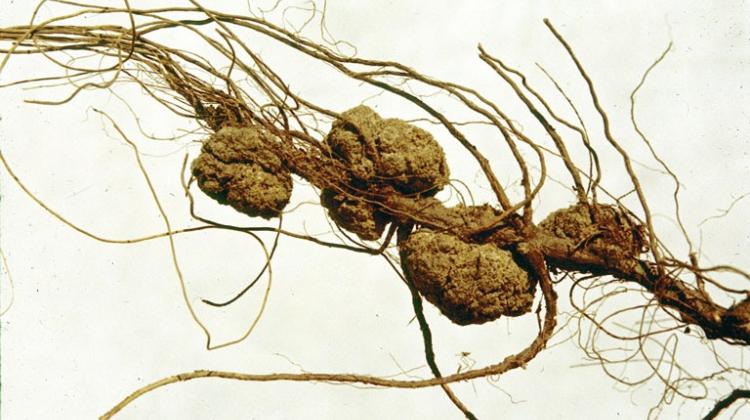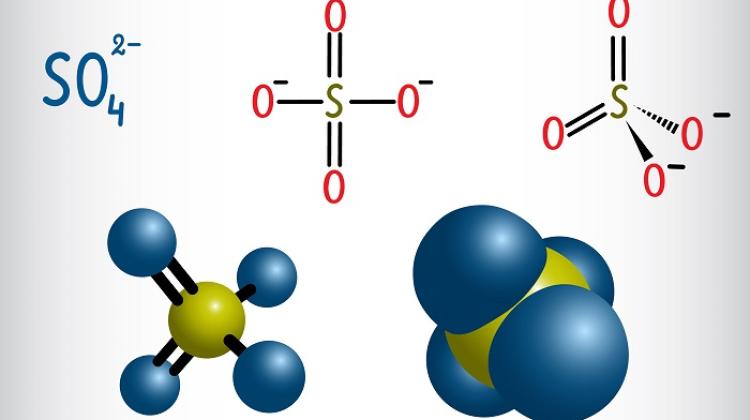History of transgenic plants: it started with galls

Development of technology to generate genetically modified plants (GMOs) was an accidental result of ... research into galls that occur, for example, on trees. Prof. Danuta Maria Antosiewicz speaks about how scientists know how to genetically modify plants.
"The study of natural processes, mechanisms that occur in nature, can quite accidentally cause a revolutionary change in science and economy" - said in an interview with PAP Prof. Danuta Maria Antosiewicz from the Faculty of Biology, University of Warsaw, who does research of transgenic plants. This was the case with plant transformation technology, which is used to obtain genetically modified plants.
"When you walk through the forest, you can sometimes see crown galls on the plants. They can occur on the stems of the plants, on shoots - both herbaceous plants, as well as on the shrubs or trees" - said Prof. Antosiewicz.
Researchers became interested in the origin of these galls. They decided to investigate the processes taking place in their cells.
BACTERIAL TROJAN HORSE
It turned out that galls are formed as a result of bacterial infection with Agrobacterium. "It\'s a commonly occurring soil bacteria. Completely harmless for people and animals, but they infect many plants - primarily dicotyledonous plants" - said the biologist.
When mechanical tissue damage occurs, for example a stem is cracked, plant cells release compounds such as sugars or phenolic compounds. It is they who are the signal for infection for Agrobacterium. When the bacteria get into the plant, they transfer some of their genes to cell genome. They want to make the plant produce nutrients they use. "The transformed plant cells within the gall become a kind of food manufacturing plant for bacteria" - compared the researcher.
In addition to the main chromosome, Agrobacterium cell contains a small, circular DNA molecule - the Ti (tumor inducing) plasmid. Only part of the plasmid is incorporated into the plant genome - the so-called T-DNA (transfer DNA). This section contains information (genes) which, after integration into the plant cell genome, make these cells multiply intensely and produce food compounds suitable for bacteria.
"Understanding this process was the first step towards creating genetically modified plants using the soil bacterium Agrobacterium - that is, plant transformation process on a large scale. The first transgenic plants were created in 1984 and are manufactured using a similar method to this day" - said Prof. Antosiewicz.
BREAKING INTO A BURGLAR\'S HOME
All this is made possible by the discovery that the bacterium can be forced to integrate completely different genes into the plant genome - ones we want - instead of those that enable the production of nutritional compounds for the bacteria. You just need to know the construction rules of bacterial Ti plasmid (the idea is to include the desired gene sequences between the border sequences of the T-DNA section). "The modified plasmid is introduced into bacterial cells. And the bacteria - not suspecting deception - introduces what we want into the genome of the plant" - noted the biologist.
Agrobacterium strain with the modified plasmid is introduced into damaged plant tissue - for example a leaf located on the medium. There the transformation of plant cells occurs. By manipulating the plant nutrient composition - for example with plant hormones - researchers can make the cells containing the foreign gene start to divide and differentiate shoots. Shoots are then transferred into another medium, which in turn enables the formation of roots. "This way, with one genetically modified cell - as a result of the transformation - you can grow a whole transgenic plant" - the researcher explained.
UNPREDICTABLE BREAKTHROUGHS
"In the beginning, at the stage of basic research, it was not known what the research results would be and how they could be used. In this case, the discovery and understanding the mechanisms of the process occurring in the nature, of transformation of plant cells by the bacterium Agrobacterium, was revolutionary - it opened a wide path of research the field of genetic modification of plants" - the researcher said.
The system using bacteria is still the simplest and most efficient when it comes to genetic modification of plants - she added. But there are still plants (including grass or banana), in which this method does not work well and researchers have to resort to more complex methods.
"Genetically modified plants were created for research purposes. Researchers around the world still use them, for example, to study the functions of individual genes. Genetically modified food is only part of the use of genetically modified plants" - concluded Prof. Antosiewicz.
PAP - Science and Scholarship in Poland, Ludwika Tomala
lt/ zan/
tr. RL
Przed dodaniem komentarza prosimy o zapoznanie z Regulaminem forum serwisu Nauka w Polsce.


















